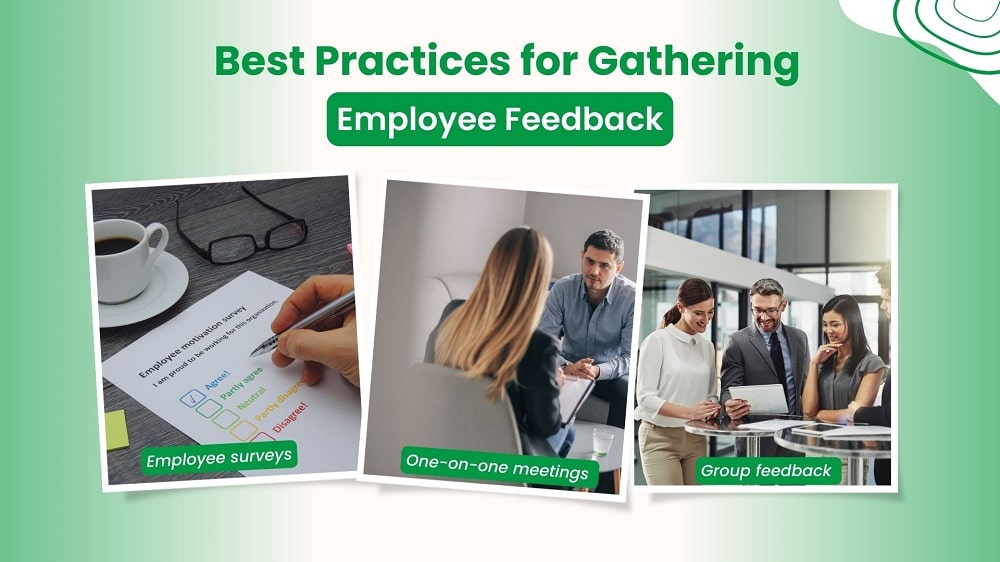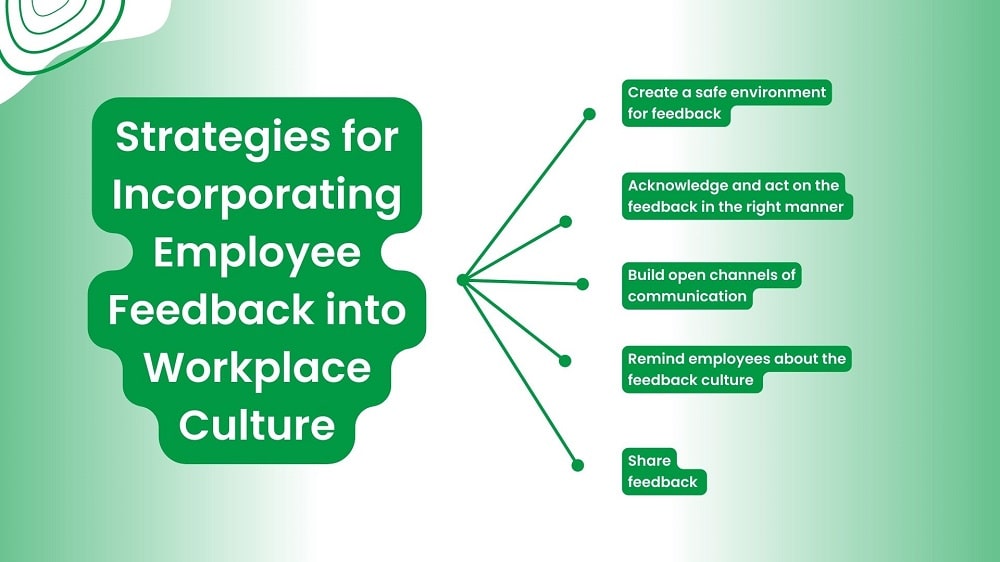A positive workplace culture is the top priority of job seekers and existing employees. And without actively considering your employees, it is hard to create a good workplace culture.
In a recent Glassdoor Survey, 56% of employees say a good workplace culture is more important even than salary, and in a CNN report, 33% of the workers cite that poor company culture is their No. 1 reason for leaving the current organization.
Thus, you can clearly understand the impact of a positive workplace culture on attracting new quality talent and retaining the existing capable talent.
Employee feedback plays a vital role in creating a positive workplace culture. It helps you get direct insights into how your employees feel and provide actionable insights to create a positive workplace culture.
A positive workplace culture offers a wide range of benefits to an organization such as improved employee engagement and productivity, lower employee turnover rate, and increased job satisfaction.
In this post, we will look at those benefits in brief, understand the role of employee feedback in creating a positive workplace culture, learn about the best practices for gathering employee feedback, and more.
Benefits of creating a positive workplace culture

A positive workplace culture benefits both employees and the organization. It promotes employee psychological well-being, creates the necessary safe environment for employees to do their best work, boosts productivity, and reduces employee turnover rate.
- Employees are less likely to leave: A happy workplace creates satisfied employees. It makes your employees less likely to leave, increases employee retention rate, and reduces absenteeism.
- Attract quality new talent: Everyone wants to work at a positive workplace. You can build a great brand identity that gives you an edge over competitors when it comes to attracting quality talent.
- Boost employee performance: When employees feel valued and have psychological safety, they do their best. It boosts employee focus, productivity, and performance.
- Growth and development: Feeling connected to the company goals and belonging to the company, encourages employees to do more efforts for the growth of the company.
- Improve trust: When your employees know that the company values employee well-being, this improves their trust in their employer and increases job satisfaction. They are more focused on work than other things.
The Role of employee feedback in creating a positive workplace culture

Employees make the workplace culture. They are not separate from it. In fact, they are the true portrayal of the company’s work culture. Thus, the best way to know how your frontline soldiers are feeling is to ask them directly.
Employee feedback provides you with valuable insights into the problems they are facing, how they feel about the company policies, and what can be done. The actionable insights from employees’ feedback help you diagnose the problem early on and quickly act on it before the problem becomes a big concern. This also helps in reducing workplace conflicts among employees and with managers which contributes to creating a positive workplace.
Employee feedback makes your employees feel valued, feel seen, and feel heard, which creates an environment of trust in the workplace. Having such an environment at the workplace encourages employees to actively take part in achieving organizational goals.
Employee feedback also greatly helps you. It helps you improve your leadership skills. It sheds light on your performance and the areas you need to improve.
Employee feedback can help you improve in many key areas of your organization from current workplace challenges at the team level to challenges with management and policy issues. Thus, leadership plays a key role in infusing the culture of employee feedback into the workplace to create a positive and psychologically safe environment for work.
You will require the right knowledge and tools to build a culture of feedback in your organization. Let’s talk about it.
Best practices for gathering employee feedback

Gathering employee feedback is an art. It should be gathered at the right time, at the right level, and at the right stage. For example, feedback can be conducted at the interpersonal level, team level, and organizational level. The best time for gathering interpersonal feedback is when you are giving one. For the team feedback, it is best to conduct quarterly. And if it is at organizational feedback, you can run feedback surveys bi-annually.
We have listed three best practices to gather employee feedback effectively.
1. Employee surveys
Employee surveys are the best way to get actionable feedback. It can be conducted in various forms: employee engagement survey, pulse survey, or new employee survey.
Employee engagement surveys are conducted quarterly to understand anything that is impacting a company’s work culture and employee job satisfaction. The key to success in employee engagement surveys is to ask targeted questions to address specific topics.
Here are some questions you can ask:
- What do you need help with?
- What would you like to fix in this organization?
- Which company value would you like to see?
Pulse surveys are shorter anonymous surveys containing 2-5 questions and are often conducted weekly, bi-weekly, or monthly to measure engagement and satisfaction.
New employee surveys are conducted to know employee experience in the first 90 days with the company. It can be sent at 30, 60, and 90 days.
2. One-on-one meetings
Employee surveys are a great way to collect feedback at the organizational and team level, but one-on-one meetings are a great way to gather feedback at a personal level. It can help you better understand the issues an employee is facing and know them in detail.
Some employees are hesitant to share insights in one-on-one meetings. For them, it is best to make it a performance review meeting where both parties share their perspective.
3. Group feedback
Group feedback is another great way to collect feedback from employees. It gives employees the support of the team to speak about the issues. It is great to collect honest insights from the entire team and help the manager build a relationship with the team. People are more expressive in group feedback. This type of feedback is ideal for teams, departments, or specific processes.
Strategies for incorporating employee feedback into workplace culture

Incorporating the culture of employee feedback into your workplace takes some effort. Leadership can face a lot of challenges and you need strategies to encounter those challenges effectively.
Just for example, most employees hold back and are hesitant to share honest feedback because they are afraid of their bosses or immediate supervisors. Especially, when they have to disagree or criticize. Thus, you need to create a space for employees where they can share feedback without fear.
You can do that by creating an anonymous feedback survey or discussion where everyone can share feedback without any fear. Your employees would love to share their insights on the issues they are facing and what can be done to improve the workplace culture.
Let’s talk about similar strategies that you can use to encourage and facilitate employees to share their feedback and talk openly to create a positive workplace:
1. Create a safe environment for feedback
Create a safe environment where employees feel safe to share their feedback without fearing repercussions. If your employees are feared, they will not speak about the issues where they are in direct disagreement.
You can ease this fear by creating anonymous feedback surveys. You can use the online forms or invest in the feedback tools that allow you to create employee feedback surveys.
Dedicated feedback tools such as 15Five, CultureAmp, and Survey can help you use standardized, objective, and fact-based validated techniques for gathering and analyzing feedback.
2. Acknowledge and act on the feedback in the right manner
Responding to the feedback in the right manner is as important as gathering the feedback. If you do not acknowledge the feedback in a positive way and work on it, this results in employees losing trust in the feedback.
Say a few words of appreciation to your employee that they bring this issue forward and offer employees assurances and solutions. This gives confidence to employees that their feedback is well received and valued. It also encourages them to speak up next time for any issues they are facing without hesitation.
Even if you cannot do much about the situation, acknowledge the employee’s comments and try to find an alternative solution.
3. Build open channels of communication
It takes time and effort to make your employees believe you are open to feedback as an organization. You need to consistently carry out the activities and incorporate policies that build open channels of communication.
You can host group feedback sessions or small luncheon events that encourage employees to ask and share anything. You can expect some hard questions and may not be able to honor all the requests. But, the key is to respond to those questions and requests in a manner that encourages open communication.
You can make sure immediate supervisors and managers always have the door open for communication. This gives your employee enough confidence that they can walk to your room about any issue they are facing.
Address their issues, provide them with assurances and solutions, and take follow-ups. Follow-ups are necessary because it gives you a clear picture of whether or not the issue is addressed.
4. Remind employees about the feedback culture
Over time, your employees can easily forget the feedback culture if you do not have the right practices in place. Therefore, make receiving and giving feedback a habit. It can be a one-on-one monthly feedback session, weekly or bi-weekly check-in, informal light-hearted discussion, or quarterly group feedback meeting of the entire company. Having these practices in place builds a feedback culture in your workplace, encourages employees to share their views & feelings, and keeps them aware of the latest updates and policy changes.
5. Share feedback
Sharing feedback from time to time is as important as receiving feedback. Recognize and celebrate your team or team member’s success and accomplishments. Reward employees who are performing great. At the same time, if you are facing any performance or behavioral issues, address the issue head-on and let your employees know what is expected of them. This will help you build a culture of transparent and open communication and help you take swift actions to address problems.
Read more: How to Master the Art of Giving Feedback (6 Hacks That No One Will Tell You
Common Pitfalls to Avoid in Implementing Employee Feedback Strategies
There are a few things that you must avoid to make sure your feedback is not obsolete and they offer you some valuable and actionable insights.
- Lack of clarity: Not defining the purpose, asking questions that create confusion, and not setting the expectations right can result in feedback that is not useful. Moreover, it will frustrate employees as it does not create any value.
- Lack of follow-up: Not taking prompt actions and following up with employees is detrimental to feedback surveys. This will send employees the message that their feedback is not valued or taken seriously.
- Choosing the wrong channel: Not creating unbiased feedback results in employees losing trust in the feedback. Factors such as personal biases, preferences, and emotions while creating feedback surveys, employees getting affected by feedback biases from coworkers, and lack of anonymity & science-backed feedback questions can influence your employee feedback.
- Making feedback too frequent: Asking your employees for feedback too frequently or making it too demanding to share information can make your employees lose interest in the feedback.
- Postponing feedback: If you are taking too much time to receive and give feedback when nothing can be done to improve the situation, then feedback loses its value and undermines trust.
Build a culture of feedback to a create positive workplace
Employee feedback is a doorway to the heart and mind of the employees, and employees are your workplace culture. When you know and understand your employees paired with the right vision, it is easy to create a positive happy workplace where everyone wants to come and work.
Conducting the right employee feedback help brings attention to the areas where you need to work on, provides you with suggestions on what can be done, and offers insights to help you devise strategies to create a positive workplace culture.
You can learn more about workplace issues and how to address them by reading our well-researched blogs:




















No Comments